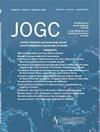Complication Differences Across Elective, Minimally Invasive, Outpatient Hysterectomy and Myomectomy
IF 2
Q2 OBSTETRICS & GYNECOLOGY
引用次数: 0
Abstract
Objectives
To examine differences in 30-day complications between minimally invasive myomectomy and minimally invasive hysterectomy in the outpatient setting.
Methods
This was a retrospective, propensity-matched cohort study using data collected from the American College of Surgeons National Surgical Quality Improvement Program Participant Use Data Files from 2016 to 2021. The American College of Surgeons National Surgical Quality Improvement Program database collects surgical outcome data from over 700 hospitals in the United States. Cases selected for this study were performed in the outpatient setting. Patients aged 18–50 years who had undergone a minimally invasive elective outpatient hysterectomy or myomectomy for a primary indication of uterine fibroids. Patients were stratified by whether they underwent a minimally invasive hysterectomy or minimally invasive myomectomy. The primary outcome was the incidence of 30-day complications, with secondary outcomes including readmissions and reoperation.
Results
Among 31 203 patients (median age: 43 years), 14% underwent myomectomy. Based on a matched analysis of 3413 myomectomy-hysterectomy pairs, patients who underwent myomectomy had lower odds of 30-day postoperative complication (OR 0.73; 95% CI 0.59–0.90, P = 0.003), hospital readmission (OR 0.39; 95% CI 0.27–0.57, P < 0.001), and reoperation (OR 0.33; 95% CI 0.17–0.64, P = 0.001).
Conclusions
Complication rates across these 2 surgical management options for leiomyomas favour minimally invasive myomectomy for elective outpatient cases.
选择性微创门诊子宫切除术和子宫肌瘤切除术的并发症差异。
目的:探讨门诊微创子宫肌瘤切除术与微创子宫切除术30天并发症的差异。方法:这是一项回顾性、倾向匹配的队列研究,数据收集自2016年至2021年美国外科医师学会(ACS)国家手术质量改进计划(NSQIP)参与者使用数据文件(puf)。ASC NSQIP数据库收集了来自美国700多家医院的手术结果数据。本研究选择的病例是在门诊进行的。年龄18-50岁,因子宫肌瘤的主要指征行微创选择性门诊子宫切除术或子宫肌瘤切除术的患者。根据患者是否接受微创子宫切除术或微创子宫肌瘤切除术对患者进行分层。主要结果是30天并发症的发生率,次要结果包括再入院和再手术。结果:在31203例患者(中位年龄:43岁)中,14%的患者接受了子宫肌瘤切除术。根据对3413对子宫肌瘤切除术-子宫切除术的匹配分析,子宫肌瘤切除术患者术后30天并发症的发生率较低(优势比[OR]: 0.73;95%置信区间[CI]: 0.59,0.90;P = 0.003),再入院率(OR: 0.39;95% ci: 0.27,0.57;P < 0.001),再手术(OR: 0.33;95% ci: 0.17,0.64;P = 0.001)。结论:两种手术治疗平滑肌瘤的并发症发生率倾向于微创子宫肌瘤切除术。
本文章由计算机程序翻译,如有差异,请以英文原文为准。
求助全文
约1分钟内获得全文
求助全文
来源期刊

Journal of obstetrics and gynaecology Canada
OBSTETRICS & GYNECOLOGY-
CiteScore
3.30
自引率
5.60%
发文量
302
审稿时长
32 days
期刊介绍:
Journal of Obstetrics and Gynaecology Canada (JOGC) is Canada"s peer-reviewed journal of obstetrics, gynaecology, and women"s health. Each monthly issue contains original research articles, reviews, case reports, commentaries, and editorials on all aspects of reproductive health. JOGC is the original publication source of evidence-based clinical guidelines, committee opinions, and policy statements that derive from standing or ad hoc committees of the Society of Obstetricians and Gynaecologists of Canada. JOGC is included in the National Library of Medicine"s MEDLINE database, and abstracts from JOGC are accessible on PubMed.
 求助内容:
求助内容: 应助结果提醒方式:
应助结果提醒方式:


